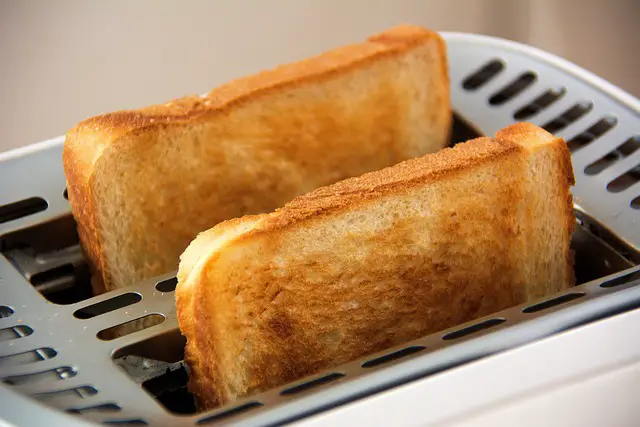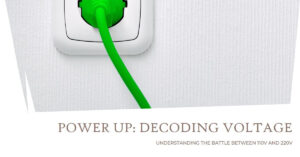In the world of appliances, understanding the basics of electrical systems is crucial to ensuring safety and functionality.
One common question that arises, especially for those traveling or relocating, is whether it’s possible to run a 110V toaster on a 220V power supply. The short answer is, No, you should not run a 110V toaster on a 220V power supply. It’s essential to use a voltage converter or appliances within their designated voltage range.
In this guide, we’ll explore the implications, potential risks, and practical solutions to help you make informed decisions about your appliances. “This article may have Amazon affiliate to products which means I may get a commission if you buy something from Amazon following the link, however, I only recommend high-rated products”
Understanding Voltage

In the United States, the standard voltage for household appliances is 110V. However, in many other countries, including those in Europe and Asia, the standard voltage is 220V.
This difference can have significant consequences for your appliances, and it’s important to grasp the basics of voltage to make informed choices.
Potential Risks and Hazards
Running a 110V toaster on a 220V power supply can pose serious risks. Electrical safety concerns, impact on appliance functionality, and fire hazards are some of the potential issues.
Not only can it damage your toaster, but it may also lead to dangerous situations. Safety regulations are in place to prevent such mishaps, emphasizing the importance of adhering to recommended voltage specifications.
Can You Run a 110V Toaster on 220V?
Technically, a 110V toaster is not designed to operate on 220V. Manufacturers specify voltage requirements, and deviating from these guidelines can result in damage to the appliance.
It’s crucial to check the toaster’s technical compatibility and heed the manufacturer’s guidelines to avoid unintended consequences.
Using Voltage Converters and Transformers
For those faced with different voltage environments, voltage converters and transformers become potential solutions.
These devices can adapt the power supply to match the toaster’s requirements. However, users must exercise caution, ensuring the converter can handle the toaster’s power needs and provide a stable output voltage.
Let’s break it down;
When faced with the challenge of running a 110V toaster on a 220V power supply, voltage converters and transformers become potential solutions. These devices serve to modify the electrical voltage, bridging the gap between the appliance’s requirements and the available power source.
- Voltage Converters: Voltage converters, also known as voltage transformers, are devices that can step up or down the voltage of the electricity supplied to an appliance. In the context of a 110V toaster on a 220V power supply, a step-down converter is typically required. This device reduces the 220V power to the 110V range that the toaster can safely handle. It’s crucial to choose a converter with the appropriate power capacity to match or exceed the requirements of the toaster. Additionally, converters should provide a stable output voltage to prevent damage to the appliance.
- Transformers: Transformers work similarly to voltage converters but may not be as versatile in terms of adjusting voltage levels. Step-up transformers increase the voltage, while step-down transformers decrease it. Like converters, transformers need to be selected based on the specific requirements of the toaster. Users should pay attention to the wattage and voltage ratings of both the toaster and the transformer. Using a transformer with insufficient capacity may lead to overheating and damage.
While converters and transformers offer a solution, it’s essential to exercise caution. Continuous use of converters may lead to energy inefficiency, and not all appliances are suitable for use with these devices. Additionally, the quality of the converter or transformer matters; investing in a reliable product ensures safer and more effective voltage modification.
In conclusion, using voltage converters or transformers requires careful consideration of the toaster’s specifications, the power supply characteristics, and the quality of the conversion device.
When chosen and used correctly, these devices can help adapt appliances to different voltage environments, allowing users to enjoy their favorite toasts without compromising safety or functionality.
The staff I recommend (Amazon Affiliate Links to products I believe are high quality):
- Economy 120 Volt/60Hz AC Power Source – Step-Down Voltage & Frequency Converters 1800W
- UNI-T Digital Multimeter Tester UT139C
- 50-Amp Extension Cord for RV “100ft”
- Voltage Stabilizer 110/220v
- Hair Dryer “best selling“
- TOSHIBA EM131A5C-BS Countertop Microwave Ovens
Disclaimer: This contains affiliate links to Amazon products. I may earn a commission for purchases made through these links.
Alternatives for Different Voltage Environments
Instead of using voltage converters, consumers have two advantageous alternatives when dealing with the differences between a 110V toaster and a 220V power supply.
- Region-Specific Appliances: Purchasing appliances designed for the specific voltage of the region is a straightforward solution. If you’re in the United States or a region using 110V, buy appliances labeled for 110V. Likewise, if you’re in a country with a 220V standard, look for appliances manufactured for that voltage. This approach eliminates the need for converters and ensures that your appliances operate optimally in their intended environment.
- Dual-Voltage Appliances: Opting for dual-voltage appliances offers flexibility for those who frequently travel between regions with different voltage standards. These devices are designed to accommodate both 110V and 220V power supplies. When shopping for appliances, check product specifications to identify those with dual-voltage capabilities. This way, you can seamlessly use the same appliance in various locations without worrying about voltage compatibility issues.
Practical Steps for Consumers
Reading appliance labels, understanding power adapters, and checking for universal voltage support are practical steps consumers can take.
Being informed about your appliances and their compatibility can prevent potential mishaps and extend the longevity of your devices.
Importance of Compliance
Adhering to manufacturer guidelines is not only about safety but also has warranty and legal implications.
Understanding and complying with safety standards ensures the longevity of your appliances and guarantees a hassle-free experience.
Conclusion
In conclusion, when it comes to running a 110V toaster on 220V, knowledge is key. By understanding the basics of voltage, recognizing potential risks, and exploring practical solutions, you can make informed decisions about your appliances.
Prioritizing safety, following manufacturer guidelines, and seeking professional advice when needed will help you navigate the complexities of different voltage environments.
Ultimately, being proactive and informed ensures that your appliances serve you well, regardless of where you are in the world.


